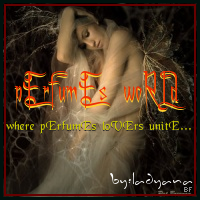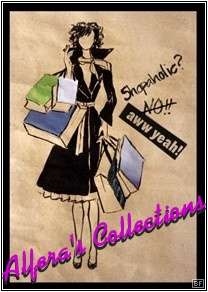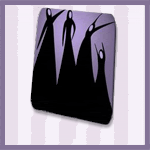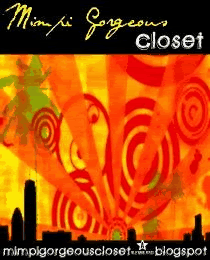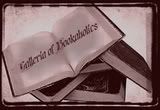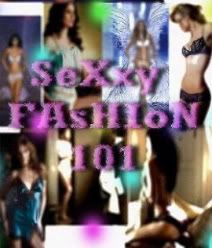dEsignEr pErfumEs.....Christian Lacroix ROUGE up for gRab!!!!
Thursday, May 21
Wednesday, April 15
Extraction
The methods used to extract fragrant oils today are based on the ancient principles of maceration, expression and stream distillation. An "absolute" is an extract obtained by extraction with volatile solvents or by enfleurage. It is considered the purest perfume material, retaining most of the plant's aromatic constituents. Many modern techniques stem from those of ancient cultures.
Enfleurage et maceration
This technique is very costly, and is rarely used today. It reached its peak in 1860 and made the reputation of Grasse. It is a labor-intensive process that yields the highest quality of absolutes because it does not involve heat. Heat always alters the fragrance. It is used on delicate flowers that can not stand up to the high heat, and that continue to release essential oils after they have been picked. Examples of these flowers are Jasmine, Violet, Tuberose and Rose.
Enfleurage goes back thousands of years to the ancient Egyptians. It works on the principle that fats absorb smells. Petals or other fragrant parts of a plant are steeped in fat or non-evaporating oil which will absorb their fragrance. A mixture of pork, lard and beef suet are smeared on to a glass plate in a wooden frame called a chassis. The flowers are placed on the fat and left to release their oils for several days. This process was repeated several times with fresh flower heads until the fat was totally absorbed with essential oil, the resultant substance being known as 'pomade'; the oil was then retrieved from the fat by dissolving in an alcoholic solvent. This is mechanically mixed with alcohol for up to one week, and is chilled to -68 degrees F. The essential oils dissolve in the alcohol and the fat does not. The mixture is chilled and filtered several times to remove all the fat. The alcohol is then evaporated to leave the pure absolute. Sometimes enfleurage is now carried out with cloth soaked in olive oil or liquid paraffin, which is laid over the frames instead of fat, the resultant perfumed oil being then known as 'huile antique'.
Maceration is similar to enfleurage. Maceration is used to extract essential oils from animal ingredients, vanilla and iris. These materials are steeped into vats of oil until the scented parts dissolve. The oil may be heated to speed up the process. Maceration takes long periods of time (sometimes years).
Expression
Expression is a simple technique where the rinds of citrus fruits are cold pressed to extract their essential oils using rollers or sponges. There is no heat involved, leaving the oil to smell very close to the original plant. The ancient Egyptians gathered flowers in a cloth bag which was twisted until the oil dripped out. In Italy, lemon oil is also occasionally expressed by a process called ecuelle.
Distillation
Distillation is the main method used for extracting essential oils. Distillation is based on the principal that when plant material is placed in boiling water, the essential oil in it will evaporate with the steam. Once the steam and oil have been condensed, the oil will separate from the water, and it can be collected. Plants are crushed to encourage them to release their oils. Plants are boiled in water, and the essential oils vaporize and rise up with the steam. The vapors are captured, and allowed to condense back into liquids. The essential oils are poured into Florentine flasks. Five to six tons of roses are needed to obtain one kilo of essential oil. Current methods also involve placing the plants on a screen and steam is passed through them.
Extraction with volatiles solvents
This method is used for delicate flowers whose odors are damaged by the high heat needed to boil water. The oils are extracted using solvents which have lower boiling points than water. Various substances such as ether or high-grade petroleum, which evaporate rapidly, are used in modern perfumery to dissolve essential oils from fragrant plant and animal materials. The usual method involves placing the fragrant material on perforated metal plates in a container (the extractor); the solvent is passed over them and led into a still, where it evaporates, leaving a semi-solid mass known as concrete, which contains the essential oil together with stearoptene. The oil can then be separated from the stearoptene by extraction with alcohol in a 'batteuse', producing the substance called absolute, which is the purest and most concentrated form of essential oil known.A part from these techniques there are various other operations such as rectification, fractional distillation, terpenes removal, decolourisation, etc., which improve and refine the numerous raw materials used for the blending and making of perfumes.
Enfleurage et maceration
This technique is very costly, and is rarely used today. It reached its peak in 1860 and made the reputation of Grasse. It is a labor-intensive process that yields the highest quality of absolutes because it does not involve heat. Heat always alters the fragrance. It is used on delicate flowers that can not stand up to the high heat, and that continue to release essential oils after they have been picked. Examples of these flowers are Jasmine, Violet, Tuberose and Rose.
Enfleurage goes back thousands of years to the ancient Egyptians. It works on the principle that fats absorb smells. Petals or other fragrant parts of a plant are steeped in fat or non-evaporating oil which will absorb their fragrance. A mixture of pork, lard and beef suet are smeared on to a glass plate in a wooden frame called a chassis. The flowers are placed on the fat and left to release their oils for several days. This process was repeated several times with fresh flower heads until the fat was totally absorbed with essential oil, the resultant substance being known as 'pomade'; the oil was then retrieved from the fat by dissolving in an alcoholic solvent. This is mechanically mixed with alcohol for up to one week, and is chilled to -68 degrees F. The essential oils dissolve in the alcohol and the fat does not. The mixture is chilled and filtered several times to remove all the fat. The alcohol is then evaporated to leave the pure absolute. Sometimes enfleurage is now carried out with cloth soaked in olive oil or liquid paraffin, which is laid over the frames instead of fat, the resultant perfumed oil being then known as 'huile antique'.
Maceration is similar to enfleurage. Maceration is used to extract essential oils from animal ingredients, vanilla and iris. These materials are steeped into vats of oil until the scented parts dissolve. The oil may be heated to speed up the process. Maceration takes long periods of time (sometimes years).
Expression
Expression is a simple technique where the rinds of citrus fruits are cold pressed to extract their essential oils using rollers or sponges. There is no heat involved, leaving the oil to smell very close to the original plant. The ancient Egyptians gathered flowers in a cloth bag which was twisted until the oil dripped out. In Italy, lemon oil is also occasionally expressed by a process called ecuelle.
Distillation
Distillation is the main method used for extracting essential oils. Distillation is based on the principal that when plant material is placed in boiling water, the essential oil in it will evaporate with the steam. Once the steam and oil have been condensed, the oil will separate from the water, and it can be collected. Plants are crushed to encourage them to release their oils. Plants are boiled in water, and the essential oils vaporize and rise up with the steam. The vapors are captured, and allowed to condense back into liquids. The essential oils are poured into Florentine flasks. Five to six tons of roses are needed to obtain one kilo of essential oil. Current methods also involve placing the plants on a screen and steam is passed through them.
Extraction with volatiles solvents
This method is used for delicate flowers whose odors are damaged by the high heat needed to boil water. The oils are extracted using solvents which have lower boiling points than water. Various substances such as ether or high-grade petroleum, which evaporate rapidly, are used in modern perfumery to dissolve essential oils from fragrant plant and animal materials. The usual method involves placing the fragrant material on perforated metal plates in a container (the extractor); the solvent is passed over them and led into a still, where it evaporates, leaving a semi-solid mass known as concrete, which contains the essential oil together with stearoptene. The oil can then be separated from the stearoptene by extraction with alcohol in a 'batteuse', producing the substance called absolute, which is the purest and most concentrated form of essential oil known.A part from these techniques there are various other operations such as rectification, fractional distillation, terpenes removal, decolourisation, etc., which improve and refine the numerous raw materials used for the blending and making of perfumes.
Sunday, April 12
frEquEntly ask quEstions:
1.Kenapa anda katakan perfume anda adalah REJECT?
3 sbb knapa pErfumE kami diklasifikasikan sebagai REJECT:
i) Factory minor defect:
biasenye pErfumE yg dijual dikaunter kondisi nye 100% perfect mcm tulisan yg clear, penutup serta spray head
ii)Shipment fault:
semua pErfumE diimport terus dr luar negara spt Europe n US, dan apabila smpai ke negara penerima, packaging rosak dan tak sesuai utk jual di kaunter..
iii)Tester product
jenama br yg dikluarkn akan dipromosikn diseuruh dunia dan pastinya TESTER diprlukan utk dijdkan sebagai promosi utk jualan..dan apabila promosi tamat sudah pastinya ade lebihan stok dr katagori TESTER yg blm digunakn lg dan tidak dapat dijual dikaunter..
2.Adakah produk2 ini TULEN?
jaminan ketulenan produk:
i)produk dijamin 100% tulen di kaunter negara yg terbabit spt Eropah, Jepun, US dan Asia dan yg pasti tiada perbezaan ketulenan produk jika dibandingkan dengan produk yg diual di kaunter..
3.Bagaimana ketulenan dapat dibuktika secara fizikal?
2 cara paling berkesan selain pengalaman peribadi pengguna:
i)goncang botol pErfume 180 darjah ke kiri n kanan, buih2 halus yang akan mengewap nke bahagian atas permukaan cecair pErfumE akan terbntuk. akan tetapi buih2 ini bukan buih2 udara tetapi lebih kpd molekul2 halus yg dapat dilihat.
ii)biasanya kaedah smburan di kertas byk diunakan dan dipraktikkan di kaunter2 seluruh dunia
3 sbb knapa pErfumE kami diklasifikasikan sebagai REJECT:
i) Factory minor defect:
biasenye pErfumE yg dijual dikaunter kondisi nye 100% perfect mcm tulisan yg clear, penutup serta spray head
ii)Shipment fault:
semua pErfumE diimport terus dr luar negara spt Europe n US, dan apabila smpai ke negara penerima, packaging rosak dan tak sesuai utk jual di kaunter..
iii)Tester product
jenama br yg dikluarkn akan dipromosikn diseuruh dunia dan pastinya TESTER diprlukan utk dijdkan sebagai promosi utk jualan..dan apabila promosi tamat sudah pastinya ade lebihan stok dr katagori TESTER yg blm digunakn lg dan tidak dapat dijual dikaunter..
2.Adakah produk2 ini TULEN?
jaminan ketulenan produk:
i)produk dijamin 100% tulen di kaunter negara yg terbabit spt Eropah, Jepun, US dan Asia dan yg pasti tiada perbezaan ketulenan produk jika dibandingkan dengan produk yg diual di kaunter..
3.Bagaimana ketulenan dapat dibuktika secara fizikal?
2 cara paling berkesan selain pengalaman peribadi pengguna:
i)goncang botol pErfume 180 darjah ke kiri n kanan, buih2 halus yang akan mengewap nke bahagian atas permukaan cecair pErfumE akan terbntuk. akan tetapi buih2 ini bukan buih2 udara tetapi lebih kpd molekul2 halus yg dapat dilihat.
ii)biasanya kaedah smburan di kertas byk diunakan dan dipraktikkan di kaunter2 seluruh dunia
Friday, March 20
hist0ry 0f pErfumes
The word perfume comes from the Latin phrase, "per" meaning "through" and "fumus" meaning smoke." The French later gave the name parfum to the pleasant smells that drift through the air from burning incense. There are few periods of history that have not been influenced by perfume. The history of perfume is often intertwined with the history of the human race.
The first form of perfume was incense. Incense was first discovered by the Mesopotamians about 4,000 years ago. Ancient cultures burned many kinds of resins, bums and woods at their religious ceremonies. They often soaked the fragrant woods and resins in water and oil, and rubbed their bodies with the liquid. They also embalmed the dead with these perfumes.
We have learned from hieroglyphics on ancient Egyptian tombs that perfume played a part in the lives of the Egyptians. Incense made its way to Egypt around 3000 B.C. and with Queen Hatshepsut, it became very popular. She led expeditions in search of incense and other valuable commodities, and the results of which were later recorded on the walls of a temple created in her honor. In the temple was a botanical garden filled with incense trees recovered from these expeditions. Perfumes were found in the tombs of Egyptian pharaohs. It is probable that the use of aromatics in mystic rites predated the burning of incense and sweet herbs in religious ceremonies.Until the beginning of Egypt's Golden Age, perfumes were used only in ritual for gods or pharaohs. Perfume was held in high esteem in Biblical times and there is frequent mention of fragrance in the Bible. In the New Testament, the three wise men carried gifts of gold, frankincense and myrrh to the infant Jesus. Long before, Moses was commanded by the Lord to "take unto thee sweet spices, stacte and onycha and galbanum...with pure frankincense...And thou shalt make it a perfume."
Frankincense is probably still the best known of the plants alluded to in the Bible. Burning incense was the privilege of priests in the earliest civilizations. The custom is still in use today in Catholic and High Episcopal churches.
Incense, aromatics, and perfumed oil became available to all Egyptians as the priests gradually relinquished their exclusive rights. Citizens were commanded to perfume themselves at least once a week. The Egyptians, fastidious in their personal habits, took elaborate baths, which were the forerunners of the luxurious bathing establishments of the Greeks and Romans. They soaked their skin in oils because it gave them pleasure, and helped protect their bodies from the drying effects of the torrid sun. Egyptians created many scented creams and emollients. They would shape them into cones and would melt them to cover their hair and bodies. Bathing was an enjoyable, social pleasure, sometimes washing as often as three times per day.
Egyptians carried perfume with them from birth until after their death. Many Egyptians put perfumes in their tombs to keep their skin silky smooth in the afterlife. Since the Egyptians believed that the soul ascended into heaven, relatives saw to it that perfume accompanied the spirit. Urns encrusted with gold, jars of delicate pottery, and chalcedonies filled with aromatics were placed in the tombs. So potent were some of the oils used, that 3,300 years after Tutankhamen's death, a trace of fragrance in the tightly sealed pots of unguents could be detected when the tomb was opened. Perfumes were used during the embalming process and took 40 to 70 days to complete! Powdered myrrh, cassia and other perfumes were used in the embalming process.
The consumption of aromatics probably reached its peak during this lavish period. Perfume shops were popular meeting places for almost everyone and the daily bath was an important activity of the Greek citizen. Different kinds of unguents were used simultaneously, with certain scents reserved for particular parts of the body. The Greeks are attributed with the art of making the first liquid perfume, although it was quite different from perfume as we know it today. Their perfumes were fragrant powders mixed with heavy oils, devoid of alcohol. The liquid was stored in elongated bottles made of alabaster and gold, called alabastrums.
Egyptians took pride in the beautiful containers that held their perfumes. These perfume bottles were also things of great beauty. The containers were made from materials such as alabaster, glass, ebony, and porcelain. Some perfume bottles were made from gold and stone. When glass first appeared in Egypt around 1558 BC, it was considered more precious than jewels.
Favorable climate conditions allowed Egypt to import many spices and aromatics from India, such as ginger, pepper and sandalwood. Egypt still holds a prominent place in perfume essential oil production, responsible for a significant portion of the world's jasmine production. The ancient Greeks and Romans learned about perfumes from the Egyptians. Trade between Crete and Egypt was healthy and symbiotic. Like the Egyptians, the most highly regarded flower of Cretans was the lily. The rose was also popular. Greek culture took a while to develop after that of the Cretans. Using a variety of fragrance carriers made from vegetable oils, such as olive oil and almond oil, they added essential oils made from lilies, roses, anise and orris root. Despite an earlier ban in the 6th century prohibiting the use of perfumes, men and women alike applied them lavishly, before and after baths, during the day and on all parts of the body.
The Roman public baths were spectacular, and the baths of the Emperor Caracalla were the most famous. One room, called the "unctuarium," had shelves with pots of unguents, jars of fragrant oils, and essences in bottles of varying size. The Romans indulged in the practice of applying perfume three times a day. Pet dogs and horses were also perfumed. At feasts, birds were released from their cages to dispense perfume from their wings; draperies, candlesticks, tables, and cushions were all perfumed. The servants wore musk, marjoram, spikenard, and other aromatics.
With Alexander the Great's invasion of Egypt in the 3rd century BC, the use of perfume and incense became even more widespread in Greece. The Greek Theophrastus of Athens discussed the various carriers of scents, the essential oils and their plant origins, and even the effect of various scents on our moods and thinking processes. He also researched how we perceive scent, and noted the connection between the perception of odors and taste.
Perhaps the most famous ruler of Egypt was Cleopatra. Cleopatra, well versed in the power of scent, was lavish in her use of perfume. After the assassination of Julius Caesar, she left Rome to become the queen of Egypt. There she greeted Mark Antony, a Roman politician, on a ship with perfumed sails. Cleopatra's arrival was announced by clouds of perfume before her barge came into view. Antony fell under her spell and in fact was so in love with her, that he killed himself upon hearing a false report that she was dead. Likewise, on hearing of Anthony's death, Cleopatra killed herself by provoking an asp to bite her.
Nefertiti, an Egyptian beauty from an earlier dynasty, surrounded herself with perfume: containers with myrrh, flacons filled with sweet oils, and handsomely ornamented jars of unguents. The cedars of Lebanon have been famous throughout the ages. Cedar was used by King Solomon in the construction of the temple; oil of cedar was used to coat papyrus manuscripts to protect them from insects in the time of the Roman Emperor Augustus, and today cedar is sprayed in wardrobes to keep moths away.
The Phoenicians of Syria were the traders or salesman of antiquity. Aromatic gums brought overland from China were bought by Europeans who could afford them. Possession of the sweet-smelling herbs was evidence of wealth. It was prestigious to wear perfume, and owners of large amounts of oils and unguents were greatly respected.
Linking the past and present of the perfume industry are the Arabs. The process of extracting oils from flowers by means of distillation, (the procedure most commonly used today), was developed by Avicenna, the Arabian doctor unto was also a chemist. He first experimented with the rose. Until his discovery, liquid perfumes were mixtures of oil and crushed herbs, or petals which made a strong blend. Rose water was more delicate, and immediately became popular.
During the reign of Catherine de Medici in France perfumes flourished. Catherine brought her own perfumer, Rene le Florentin from Italy, with her. His laboratory was connected with her apartments by a secret passageway, so that no formulas could be stolen en route.
The first form of perfume was incense. Incense was first discovered by the Mesopotamians about 4,000 years ago. Ancient cultures burned many kinds of resins, bums and woods at their religious ceremonies. They often soaked the fragrant woods and resins in water and oil, and rubbed their bodies with the liquid. They also embalmed the dead with these perfumes.
We have learned from hieroglyphics on ancient Egyptian tombs that perfume played a part in the lives of the Egyptians. Incense made its way to Egypt around 3000 B.C. and with Queen Hatshepsut, it became very popular. She led expeditions in search of incense and other valuable commodities, and the results of which were later recorded on the walls of a temple created in her honor. In the temple was a botanical garden filled with incense trees recovered from these expeditions. Perfumes were found in the tombs of Egyptian pharaohs. It is probable that the use of aromatics in mystic rites predated the burning of incense and sweet herbs in religious ceremonies.Until the beginning of Egypt's Golden Age, perfumes were used only in ritual for gods or pharaohs. Perfume was held in high esteem in Biblical times and there is frequent mention of fragrance in the Bible. In the New Testament, the three wise men carried gifts of gold, frankincense and myrrh to the infant Jesus. Long before, Moses was commanded by the Lord to "take unto thee sweet spices, stacte and onycha and galbanum...with pure frankincense...And thou shalt make it a perfume."
Frankincense is probably still the best known of the plants alluded to in the Bible. Burning incense was the privilege of priests in the earliest civilizations. The custom is still in use today in Catholic and High Episcopal churches.
Incense, aromatics, and perfumed oil became available to all Egyptians as the priests gradually relinquished their exclusive rights. Citizens were commanded to perfume themselves at least once a week. The Egyptians, fastidious in their personal habits, took elaborate baths, which were the forerunners of the luxurious bathing establishments of the Greeks and Romans. They soaked their skin in oils because it gave them pleasure, and helped protect their bodies from the drying effects of the torrid sun. Egyptians created many scented creams and emollients. They would shape them into cones and would melt them to cover their hair and bodies. Bathing was an enjoyable, social pleasure, sometimes washing as often as three times per day.
Egyptians carried perfume with them from birth until after their death. Many Egyptians put perfumes in their tombs to keep their skin silky smooth in the afterlife. Since the Egyptians believed that the soul ascended into heaven, relatives saw to it that perfume accompanied the spirit. Urns encrusted with gold, jars of delicate pottery, and chalcedonies filled with aromatics were placed in the tombs. So potent were some of the oils used, that 3,300 years after Tutankhamen's death, a trace of fragrance in the tightly sealed pots of unguents could be detected when the tomb was opened. Perfumes were used during the embalming process and took 40 to 70 days to complete! Powdered myrrh, cassia and other perfumes were used in the embalming process.
The consumption of aromatics probably reached its peak during this lavish period. Perfume shops were popular meeting places for almost everyone and the daily bath was an important activity of the Greek citizen. Different kinds of unguents were used simultaneously, with certain scents reserved for particular parts of the body. The Greeks are attributed with the art of making the first liquid perfume, although it was quite different from perfume as we know it today. Their perfumes were fragrant powders mixed with heavy oils, devoid of alcohol. The liquid was stored in elongated bottles made of alabaster and gold, called alabastrums.
Egyptians took pride in the beautiful containers that held their perfumes. These perfume bottles were also things of great beauty. The containers were made from materials such as alabaster, glass, ebony, and porcelain. Some perfume bottles were made from gold and stone. When glass first appeared in Egypt around 1558 BC, it was considered more precious than jewels.
Favorable climate conditions allowed Egypt to import many spices and aromatics from India, such as ginger, pepper and sandalwood. Egypt still holds a prominent place in perfume essential oil production, responsible for a significant portion of the world's jasmine production. The ancient Greeks and Romans learned about perfumes from the Egyptians. Trade between Crete and Egypt was healthy and symbiotic. Like the Egyptians, the most highly regarded flower of Cretans was the lily. The rose was also popular. Greek culture took a while to develop after that of the Cretans. Using a variety of fragrance carriers made from vegetable oils, such as olive oil and almond oil, they added essential oils made from lilies, roses, anise and orris root. Despite an earlier ban in the 6th century prohibiting the use of perfumes, men and women alike applied them lavishly, before and after baths, during the day and on all parts of the body.
The Roman public baths were spectacular, and the baths of the Emperor Caracalla were the most famous. One room, called the "unctuarium," had shelves with pots of unguents, jars of fragrant oils, and essences in bottles of varying size. The Romans indulged in the practice of applying perfume three times a day. Pet dogs and horses were also perfumed. At feasts, birds were released from their cages to dispense perfume from their wings; draperies, candlesticks, tables, and cushions were all perfumed. The servants wore musk, marjoram, spikenard, and other aromatics.
With Alexander the Great's invasion of Egypt in the 3rd century BC, the use of perfume and incense became even more widespread in Greece. The Greek Theophrastus of Athens discussed the various carriers of scents, the essential oils and their plant origins, and even the effect of various scents on our moods and thinking processes. He also researched how we perceive scent, and noted the connection between the perception of odors and taste.
Perhaps the most famous ruler of Egypt was Cleopatra. Cleopatra, well versed in the power of scent, was lavish in her use of perfume. After the assassination of Julius Caesar, she left Rome to become the queen of Egypt. There she greeted Mark Antony, a Roman politician, on a ship with perfumed sails. Cleopatra's arrival was announced by clouds of perfume before her barge came into view. Antony fell under her spell and in fact was so in love with her, that he killed himself upon hearing a false report that she was dead. Likewise, on hearing of Anthony's death, Cleopatra killed herself by provoking an asp to bite her.
Nefertiti, an Egyptian beauty from an earlier dynasty, surrounded herself with perfume: containers with myrrh, flacons filled with sweet oils, and handsomely ornamented jars of unguents. The cedars of Lebanon have been famous throughout the ages. Cedar was used by King Solomon in the construction of the temple; oil of cedar was used to coat papyrus manuscripts to protect them from insects in the time of the Roman Emperor Augustus, and today cedar is sprayed in wardrobes to keep moths away.
The Phoenicians of Syria were the traders or salesman of antiquity. Aromatic gums brought overland from China were bought by Europeans who could afford them. Possession of the sweet-smelling herbs was evidence of wealth. It was prestigious to wear perfume, and owners of large amounts of oils and unguents were greatly respected.
Linking the past and present of the perfume industry are the Arabs. The process of extracting oils from flowers by means of distillation, (the procedure most commonly used today), was developed by Avicenna, the Arabian doctor unto was also a chemist. He first experimented with the rose. Until his discovery, liquid perfumes were mixtures of oil and crushed herbs, or petals which made a strong blend. Rose water was more delicate, and immediately became popular.
During the reign of Catherine de Medici in France perfumes flourished. Catherine brought her own perfumer, Rene le Florentin from Italy, with her. His laboratory was connected with her apartments by a secret passageway, so that no formulas could be stolen en route.
Thursday, March 19
terms n cndition
ola..ola..1st skali thanx cz msk blog aku..n tujuan blog ni d'creat kn is psl aku nk jual reject pErfumEs...mcm2 brand ader but yg latest kena tgk pd stock la..you all xyah risau cz brg2 ni sememang nyer oRi n xyah risau pasal kena tipu..perfume ni rejected dr segi packaging shj yg lain xde mslh..bau n lasting is 100%..aKu bley jamin 100% yg korang satisfied..(kepuasan terjamin) don't worry,just beli..
terms & condition - nak beli brape botol pn xkisah..xder minimum pmbelian..penghantaran hanya akan dibuat setelah bayaran penuh diterima
lAngkah2 nk bEli perfumes kt blog ni:-
terms & condition - nak beli brape botol pn xkisah..xder minimum pmbelian..penghantaran hanya akan dibuat setelah bayaran penuh diterima
lAngkah2 nk bEli perfumes kt blog ni:-
1st - pilih perfume yg you all suker..
2nd - sms name prfume utk aku cek stock nyer
3rd - kalo ader stock aku bg tau n bank in la duit nyer plus delivery charge rm6.00-rm8.00 ikut alamat..
maybank2u - 164306325518
dh settle tu nanti email 0r sms 0r ym dkt aku tarikh, waktu n jumlah cash yg dh masuk..pastu dalam mase 1 - 3 hari bekerja pasal kt kena ikut waktu courier koje yek..
Subscribe to:
Posts (Atom)












